The Merckx era was one of total domination, but surprisingly and maybe prematurely short. Today we look at the moment when everything changed.

Spring of 1975, Eddy Merckx looking as good as ever
Eddy Merckx won his fifth Tour de France in 1974, equalling Jacques Anquetil, and as the 1975 season progressed there seemed no reason to believe he wouldn’t win a sixth time. He had a very good spring classics season, winning four. One of the few big spring races that escaped him was Paris-Roubaix, but he was second in that.

Heading for 2nd place in the 1975 Paris-Roubaix
His career changed in a moment by an irate fan on a mountain, which is the core of today’s story, but Merckx says that he could feel the decline before then. “I had two gifts, physical strength and robust health. I was as strong as ever in 1975, but after 11 years of hard racing my health had started to suffer. I picked up colds and flu, little things like that. It had never happened before but illness was a factor in my preparation for the 1975 Tour de France. I knew I wasn’t as good going in.”
The race started well for Merckx. He was second in the prologue to a young Italian called Francesco Moser, then took the yellow jersey by winning the time trial on stage six. Eddy wasn’t brilliant in the Pyrenees, but his rivals hadn’t the will to press him, so he started stage 14 from Aurillac to the top of the Puy-de-Dome with a 92 second lead over a Frenchman, Bernard Thévenet.
Climbers climb
The Puy-de-Dome is not a climb that suited Eddy Merckx. It’s too short and steep for him to have set a rhythm and use his strength to burn off the climbers, but also too long be a power climb, like the ones in northern Europe where Merckx used his explosiveness to put the hurt on rivals. The Puy is a climber’s climb of unrelenting steepness, where the laws of physics let men with the highest power to weight ratio put in brutal accelerations that can break even the strongest all-rounder.
In 1975 the man who many say was the best pure climber in Tour de France history, Lucien Van Impe of Belgium, made those accelerations. He attacked as the steepest bit started, slowed then attacked again. Bernard Thévenet wasn’t quite in Van Impe’s climbing league but he was good, and he was in the form of his life. He was also a huge threat to Merckx because Thévenet could time trial, and was strong.
Thévenet saw Merckx had no answer to Van Impe, so he attacked as well. Merckx didn’t panic, he’d been here before. He stuck to his own constant pace, and after looking like he was in trouble he slowly began to close the gap Van Impe and Thévenet had opened. Then disaster struck, or rather a spectator did.
The punch
Fans push riders on the climbs, they pat them on the back and they chuck water on them, but even though cycling is open to it, they rarely try to impede a rider. In 1975 a Clermont-Ferrand local, Nello Breton punched Eddy Merckx in the stomach as he was heaving himself by.

Suffering after the punch
Merckx was at his maximum, suffering. His back hurt, like it always did, and he was struggling with his breathing. But the blow nearly finished him. “I was in a sea of pain. I slowed, but then something inside took over and carried me to the line,” he says now.
Once he recovered, Merckx went down the Puy with some police officers and identified Breton, who the crowd had arrested and were holding. Breton was French, the crowd were largely French and a Frenchman, Bernard Thévenet had profited in the Tour de France, but the fan’s sense of fair play was offended.
Breton was prosecuted but claimed he was pushed, however, the court still found against him. Merckx didn’t ask for damages, but was awarded one franc. “No damages could replace what I lost, that punch cost me my sixth Tour de France,” Merckx says.
Out of strength
Maybe the story might have been different if there had been a flat stage for Merckx to recover, and he certainly thinks it would have been if his doctor hadn’t administered blood thinning medicine to lessen Merckx’s bruising. “It robbed me of my strength. I don’t think my blood was as good at transporting oxygen for the rest of the Tour, and that’s why I ran out of strength when I did,” he says.
Recovery was impossible because the next stage was from Nice to Pra Loup, a tough 217 kilometres with five mountain climbs along the way. Merckx still had the yellow jersey with a 58 second lead over Thévenet, and anyone else but Merckx might have been tempted to watch and wait and let others take the initiative, but he couldn’t.
Just like the bar-room fighter he always was, he decided to get in the first punch and attacked on the Col des Champs with quite a long way to go. He sailed over the huge Col d’Allos and began the climb to the ski station at Pra Loup in good form and with a healthy lead. Then it happened.
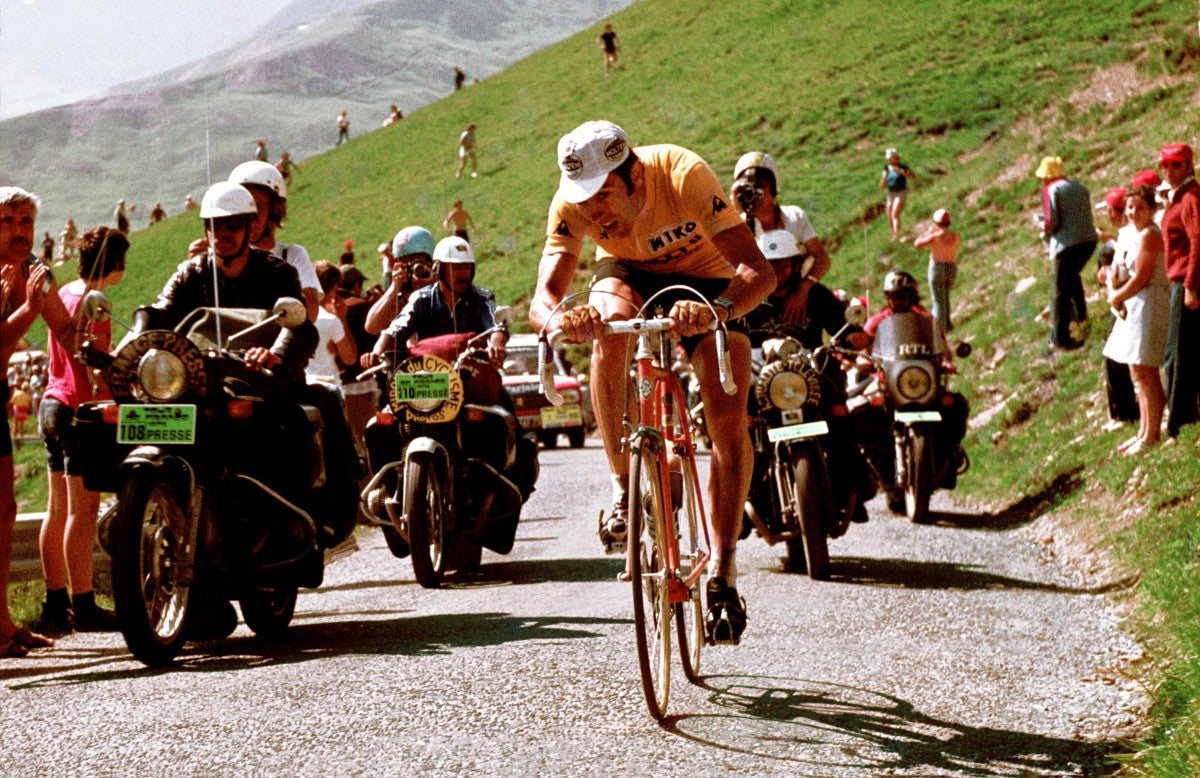
Attacking to defend on the Col d'Allos
If Merckx was Superman, Pra Loup was his Kryptonite. It’s not a steep climb, or very dramatic, the drama was all on the road as Merckx slowed like someone had switched his life into slow motion. In French cycling they call it being visited by the ‘man with the hammer’. Brits and Americans call it the ‘bonk’, but Merckx simply ran out of power. He’d been eating and drinking but he thinks that his blood wasn’t carrying the fuel he needed to his muscles. They’d been working in the red for too long, and gave out a few kilometres short of the line.
Behind Merckx, Thévenet launched an attack which splintered the chasing group. He caught Merckx and rode straight by, not even looking at him. Next up was Felice Gimondi, Merckx’s oldest rival in so many races as well as the Tour. How he would have loved to have beaten Merckx in a straight fight, but now he looked across at a man who over the years had also become his friend, who he admired, and who was now in trouble. Gimondi rode alongside Merckx for a while, seeming to try and rally him, but it didn’t work and the Italian had to press on.
And that was that, Merckx lost the yellow jersey, then was humbled again by Thévenet the next day when the Frenchman won alone in yellow on Bastille Day by climbing the legendary Col d’Izoard. For French cycling this was Geoff Hurst’s goals at Wembley in the 1966 World Cup. Louison Bobet did the same in 1954 and ever since the image of him has hung subliminally over every promising French rider.

Merckx in rainbow jersey follows Bernard Thevent in yellow
Merckx crashed early next day, fracturing his cheekbone and jaw in a silly accident just before the stage start in Valloire. It would have been the perfect reason to stop, but Eddy Merckx didn‘t stop. Fans and journalists thought that Merckx wanted to give Thévenet the satisfaction of beating him, something he didn’t disabuse them of because it gained him a lot of admiration, but it wasn’t the real reason.

Merckx after the crash that broke his jaw in the 1975 Tour
“The team depended on the Tour de France for a lot of their earnings. If I had pulled out then my second place prize would have been lost from the pot of money we shared at the end. It cost me, though. Today I think that if I had stopped, taken some time off to recover, I might have won the Tour again next year. Instead I had to dig really deep to finish, and because of my cheekbone and jaw I couldn’t eat solids for the final five days. I lost a lot of strength in those days and coupled with my back they brought the end of my career a year or so nearer,” he says today.
The 1975 Tour ended on the Champs Elysees for the very first time, after race director Felix Levitan had spent several years lobbying for it to do so. It was a stage for sprinters, but Merckx kept attacking. In a final act of great dignity he didn’t want to take anything away from Thévenet’s victory by looking like he’d acquiesced. Eddy Merckx never did to anyone.

Attacking on the final stage of the '75 Tour
All photos are owned by John Pierce, Photosport International
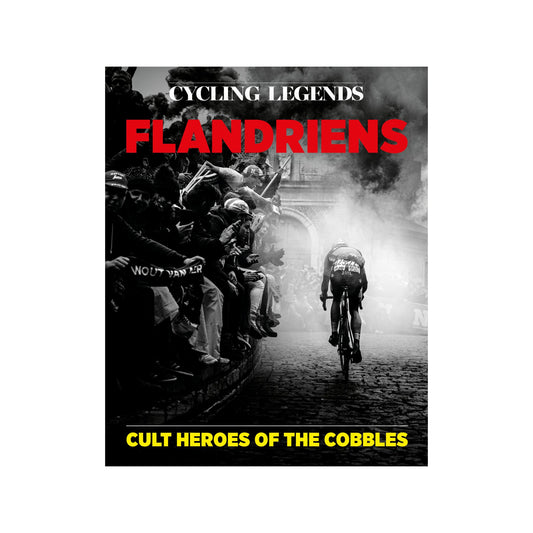

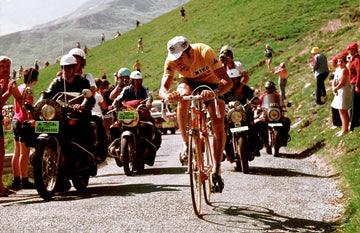
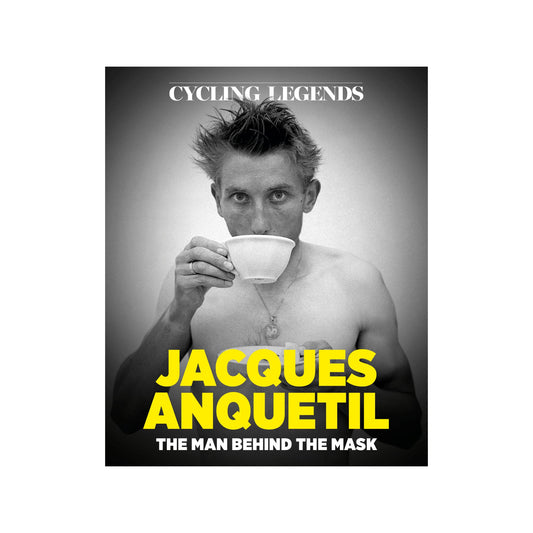
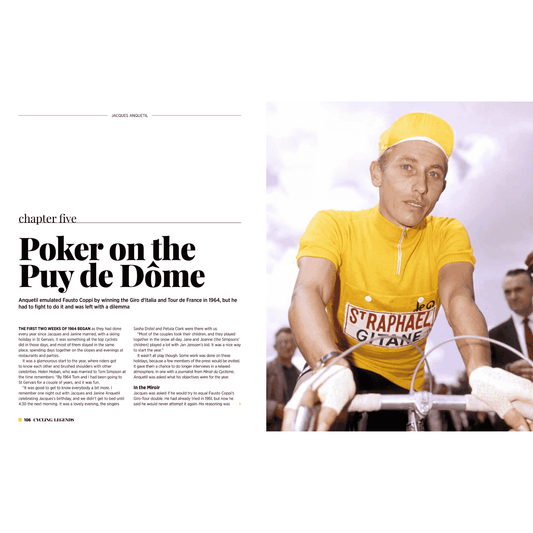
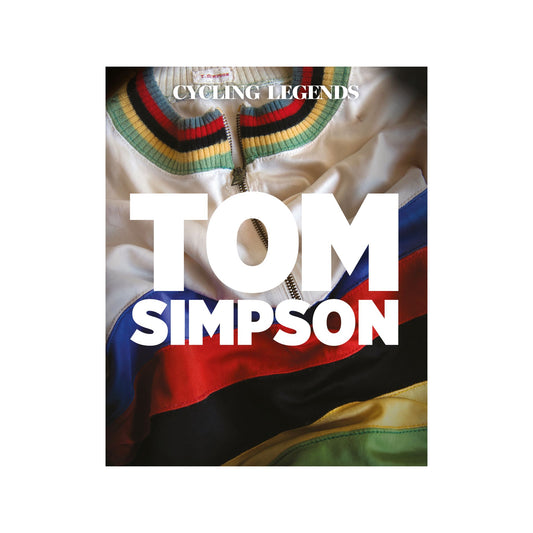

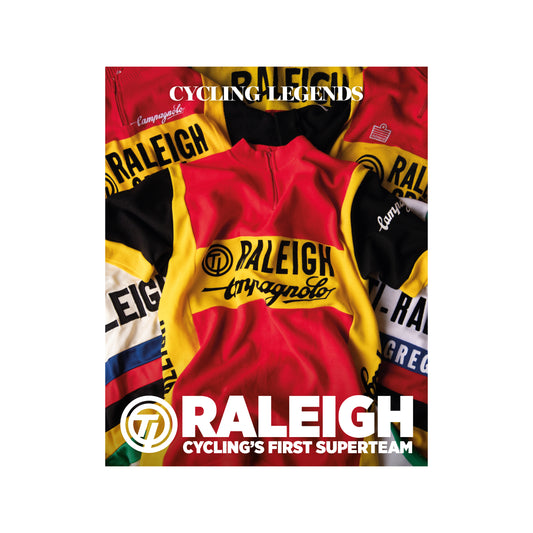

2 comments
Wonderfully written account! Thank you for posting!!
Marvelous story, and sad as well. Have never known how riders deal with the mayhem in the mountains. COVID showed us that lack of fans there doesn’t help either. Bravo to Eddy for toughing it all the way to the end of the Tour. A true cannibal.